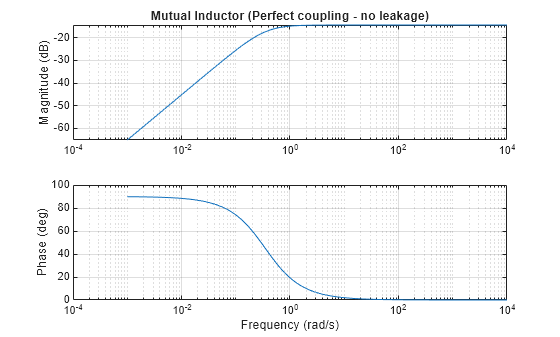Mutual Inductor
Mutual inductor in electrical systems
Libraries:
Simscape /
Foundation Library /
Electrical /
Electrical Elements
Description
The Mutual Inductor block models a mutual inductor, described with the following equations:
where:
V1 is the voltage across the primary winding.
V2 is the voltage across the secondary winding.
I1 is the current flowing into the + terminal of the primary winding.
I2 is the current flowing out of the + terminal of the secondary winding.
L1, L2 are the winding self-inductances.
M is the mutual inductance.
k is the coefficient of coupling, 0 < k < 1.
t is time.
The two electrical networks connected to the primary and secondary windings must each have their own Electrical Reference block.
Use this block to represent an AC transformer. If inductance and mutual inductance terms are not important in a model, or are unknown, you can use the Ideal Transformer block instead.
Simscape™ and Simscape Electrical™ libraries include several blocks than can model the same type of transformer device. However, these blocks make different modeling assumptions. To choose the right block for your application, you must understand how these assumptions impact the block behavior as a function of frequency. For more information, see Choose Blocks to Model Transformers (Simscape Electrical).
Variables
To set the priority and initial target values for the block variables prior to simulation, use the Initial Targets section in the block dialog box or Property Inspector. For more information, see Set Priority and Initial Target for Block Variables.
Nominal values provide a way to specify the expected magnitude of a variable in a model. Using system scaling based on nominal values increases the simulation robustness. Nominal values can come from different sources, one of which is the Nominal Values section in the block dialog box or Property Inspector. For more information, see Modify Nominal Values for a Block Variable.
Examples
Ports
Conserving
Parameters
Extended Capabilities
Version History
Introduced in R2007a

